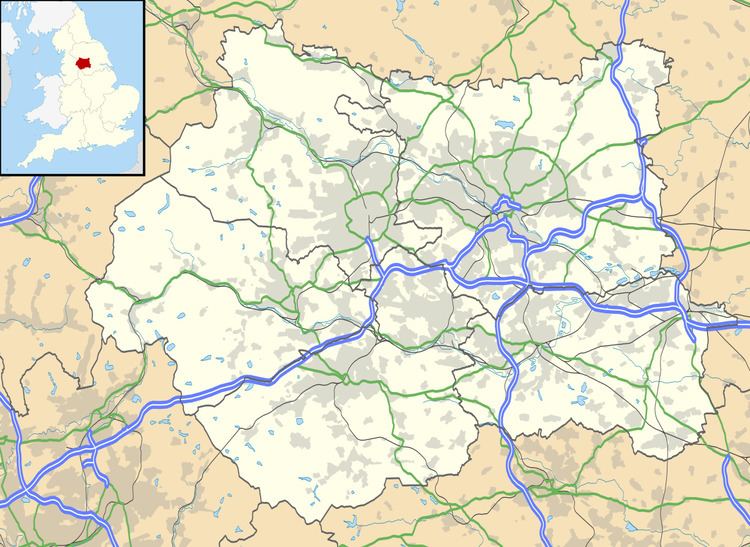OS grid reference SE225319 Post town PUDSEY | Sovereign state United Kingdom Local time Saturday 10:56 AM Dialling code 0113 | |
 | ||
Weather 11°C, Wind W at 29 km/h, 85% Humidity | ||
Fulneck Moravian Settlement is a village in Pudsey in the City of Leeds metropolitan borough, West Yorkshire, England. It was established in 1744. It is named after Fulneck (Czech: Fulnek), the German name of a town in Northern Moravia, Czech Republic.
Contents
The village (grid reference SE225319) lies in a picturesque location on a hillside overlooking a deep valley. Pudsey Beck flows along the bottom of the valley.
History
Members of the Moravian Church settled at Fulneck in 1744. They were descendants of old Bohemian/Czech Unity of the Brethren, extinct in Bohemia after 1620 due to forcible re-Catholicisation imposed on the Czech lands by Habsburg emperors, who in 1722 had found refuge in Saxony on the estate of Nicolaus Ludwig Count von Zinzendorf. Within the next few years of settling at Fulneck, housing, a school and a chapel were built, the last completed in 1748. In 1753 and 1755, separate boys' and girls' schools were opened. These were combined into one school in 1994.
Amenities
Fulneck Moravian Chapel is a Grade I listed building, making it one of the most architecturally significant buildings in Leeds. In addition to the normal Sunday Service(s), there are monthly concerts by Fulneck resident Dr Simon Lindley on a John Snetzler/Binns organ on the first Thursday of every month. Other regular musical events include recitals by former Fulneck resident cornet virtuoso Phillip McCann and at least one annual visit by Saint Peter's Singers of Leeds for a Baroque music weekend.
Many of the 18th-century stone houses in the village are listed buildings.
The fee-paying Fulneck School, established in 1753, forms a major part of the Moravian village.
Founded in 1892, Fulneck Golf Club is the oldest golf club in the Leeds area.
In recent years, a restaurant and cafe occupied an 18th-century listed building, that was the original shop for the settlement. Shop records still survive from its opening in 1762, and are believed to be some of the oldest shop archives in the UK. As of October 2015, the building is unoccupied.
The Moravian museum (opposite the church) has operated since 1969 and is open Saturdays and Wednesdays 2 pm-4 pm.
There are a number of footpaths and scenic walks in the area, including a footpath between Fulneck and the nearby village of Tong and the Leeds Country Way.
Notable people
Significant people born in Fulneck include:
Famous people known to have attended Fulneck School include:
